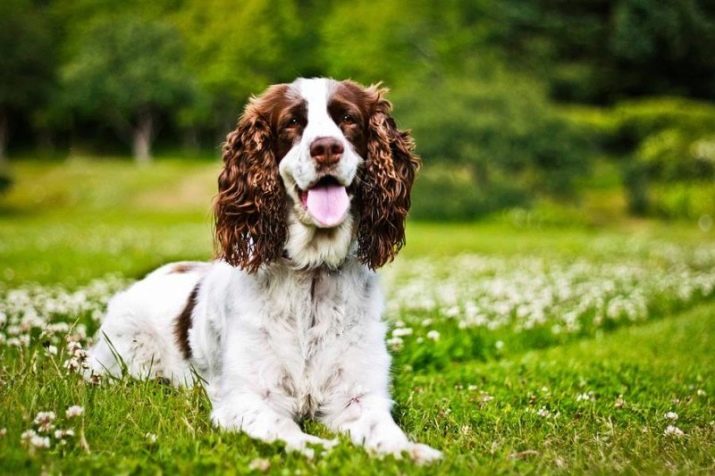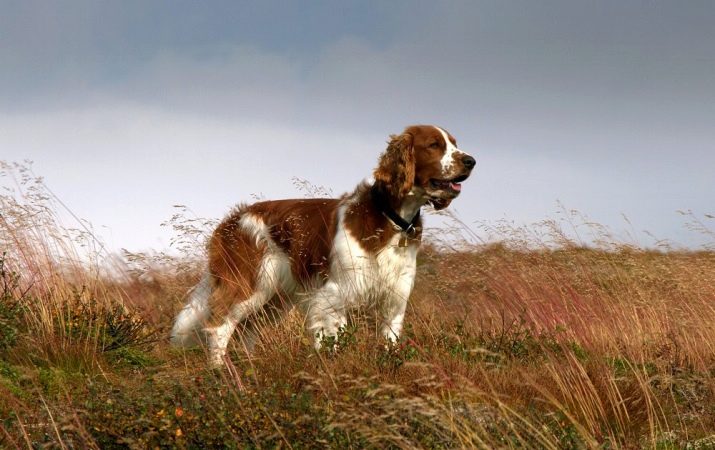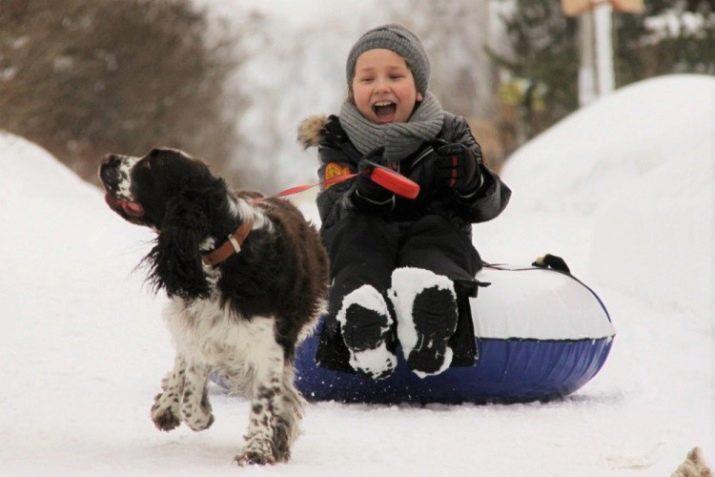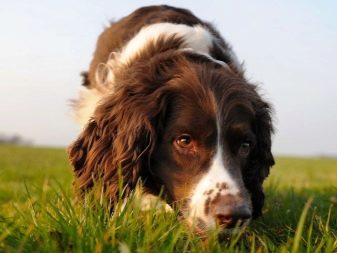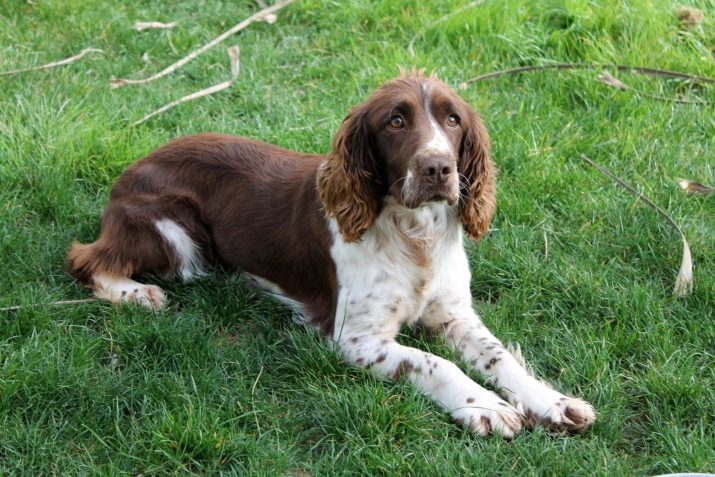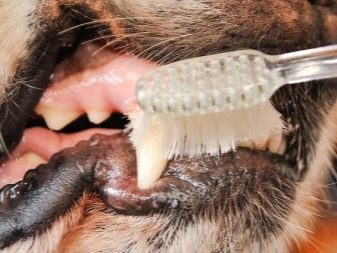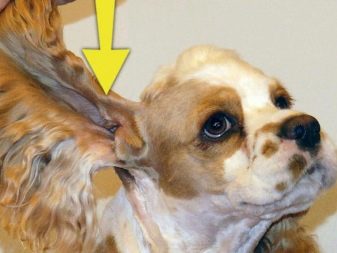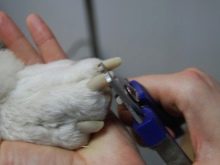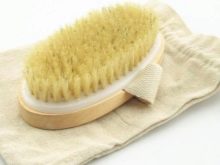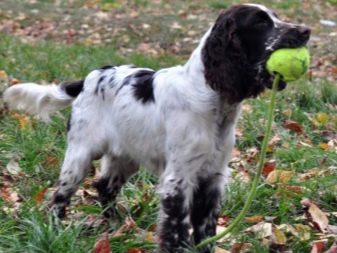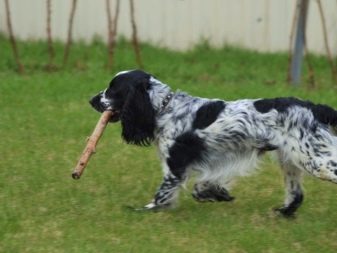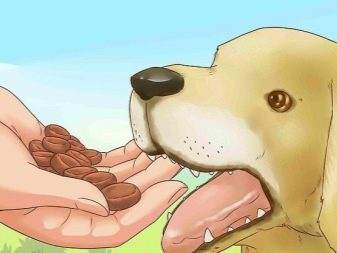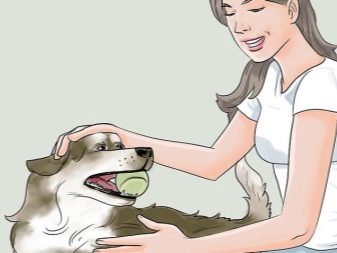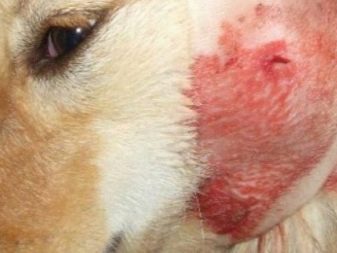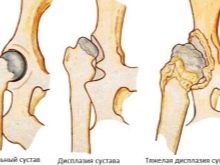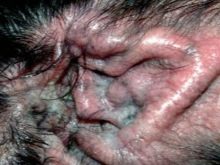Welsh Springs are one of the most obedient, intelligent, human-bound dogs, which belong to the oldest breed of spaniels, but there is no exact information about the origin. They are believed to share common genetic roots with the English Springer Spaniel breed. The Welsh Springs were on the verge of extinction, but thanks to their breeding in Wales, this type of dog was preserved. As a breed, the Welsh Springs were registered in 1902 by the Kennel Club of the Kingdom of Britain.
Breed description
Representatives of the Welsh Springer Spaniel breed are described as strong, active and playful dogs. They are ready for hard and long work. Pets love long and active walks.
Due to excessive activity the dog needs training.
Welsh Springs have a strong affection for the owner, they are great for all family members, regardless of their age. They love to play with young children, especially if they grew up with them and are well socialized. Dogs behave with restraint with strangers, they do not trust them especially. Usually they do not attack strangers, but just meet them with barking.
Springer Spaniels have a rectangular muzzle of medium length, eyes of dark color. The whites of the eyes of a healthy pet are slightly yellow. The head has a slightly domed shape. The dogs have a strong jaw and a long neck. The ears are pear-shaped, not very long, adjacent to the jaw. The body has the correct proportions, rather muscular. Legs of dogs of medium length, straight. On paws thick pads, similar to the cat, round shape. On the back of the legs there are beautiful feathering. The tail is planted low, usually the tails of this breed docked.
Welsh Springs are usually straight or slightly wavy. Dogs have a white color with bright red spots, sometimes these spots can be black or dark brown. Completely white individuals are also found. The height of the dog at the withers is 46-48 cm, weight - 16-20 kg. Despite their small size, dogs are very fast. In addition, from the name of the breed it is clear that they still know how to jump well: “Springer” in English means “jumper”.
Pet Care
The ideal place for keeping a Welsh Springer is a private house, but if you can organize long and active walks, the dog will feel good in the apartment. Ideally, if the pet has a partner for games - a dog with a similar character. The main thing in the content of the Welsh Springer is to give them enough exercise, otherwise the dog may be nervous. Dogs of this breed are very fond of water.
In the hot season for a pet you need to organize a place for swimming and water games.
To maintain a neat-looking dog, it is recommended to comb 1-2 times a week. For this fit soft natural brush. Claws are sheared once a month. Fully bathing a dog is recommended 1 time per month with a special shampoo with a neutral pH. After bathing, the pet must be thoroughly dried. Ears are required to be regularly inspected and cleaned if necessary. The dog is recommended regular preventive cleaning of the oral cavity.
Welsh Springer is best to feed with premium dry food. You can feed the dog and natural food, but in this case it will be difficult to make for it a balanced diet. The basis for natural food can be low-fat meats, vegetables and dairy products. It is necessary that a bowl of clean water is always freely available for the dog, especially in the hot season.
Features content puppies
The Welsh puppy requires special attention and care, otherwise the care of the baby is not very different from the content of an adult. A small Welsh Springer Spaniel should be fed 6 times a day, from 8 months of age can be transferred to two meals. In general, the puppy ration should be balanced - this is very important in the period of its active development.
Puppies are susceptible to all sorts of infections and diseases, so they need to be given all the necessary vaccinations. The first vaccination is carried out at 8-9 weeks, and the second at the 12th week of life. Further vaccination is carried out annually. Usually, after vaccination in small Welsh pets, there is an increase in temperature, lack of appetite, and general weakness, which disappear in a few days. Welsh puppy is prone to ear infections, so it is important to regularly check his ears, try to save him from drafts and hypothermia.
It is also important to be engaged in raising a puppy. It is necessary to train him in the main teams:
- “Lie down”;
- "sit";
- "to me";
- "stand";
- "a place";
- "Aport" and others.
It is important to socialize a little pet - to introduce him to all family members, other animals and relatives.
Training
Training Welsh dog must pass without fail so that the hunting instincts of the dog are manageable. Training can be carried out independently or give the dog for training professionals. Individuals of this breed are easy to learn and achieve high results. You should not stop the training, if there are no quick results - learning takes enough time.
Outdoor occupations are best for outdoor activities. You can not blame the pet. In the process of learning, the “carrot method” is best suited - encourage the dog with a delicacy for the correct execution of tasks. In the process of training it is possible not only to train the dog with the basic necessary commands, but also to develop hunting skills, if necessary. It is important to treat pet training seriously enough, because improper training can negatively affect its character.
Longevity and health
Welsh Springer Spaniel dogs are in good health and live up to 13 years on average. To maintain the health of a pet, daily physical exertion is necessary, proper nutrition - otherwise the dog may become obese, which will provoke the development of other diseases.
The most common diseases among this breed are:
- retinal atrophy;
- ear infections;
- joint dysplasia;
- skin diseases;
- fucosidosis.
Rarely, an epileptic disease occurs, which is manifested by outbreaks of sudden aggression. At such times, the dog is out of control, it can attack the owner. In this case, it is important to contact a veterinarian as soon as possible and begin treatment.
It is equally important to regularly undergo routine examinations at the veterinary clinic and vaccinate the animal.
Selection rules
Before buying a puppy, it is necessary to examine information about the selected breed, to assess its ability to provide the dog with all the necessary conditions. It is also important to assess their readiness for the appearance of a dog in the family, the ability to devote time and energy to it.
Purebred puppy is better to buy in proven kennels, where they will provide all the necessary documents for the dog - a passport and pedigree. When choosing a pet you need to pay attention to his appearance and behavior.A Welsh puppy must be active, friendly and playful. The baby’s nose should be wet, eyes and ears should be clean. A puppy should not smell unpleasant. Be sure to ask about the puppy's state of health, whether his parents have any genetic diseases that could be inherited.
A puppy should be vaccinated according to its age.
See the video below for more on the Welsh Spinger Spaniel.

